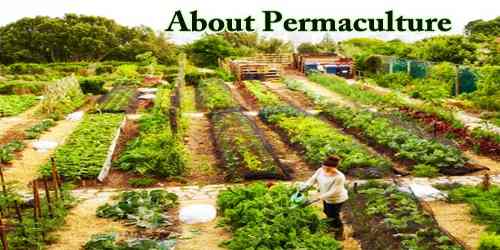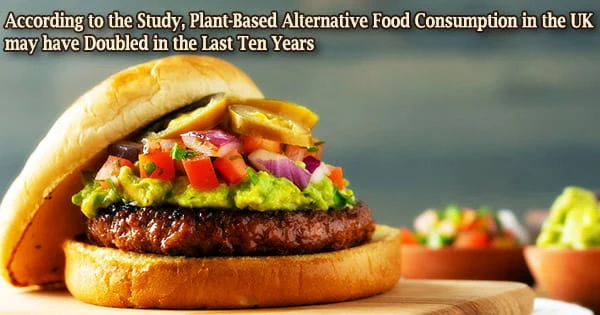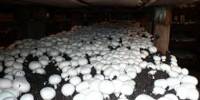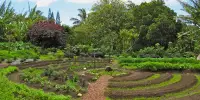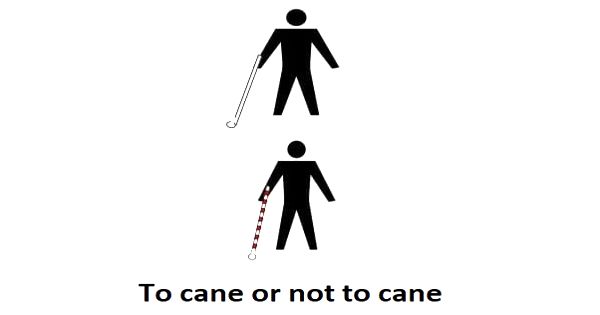“Permaculture is a philosophy of working with, rather than against nature; of protracted & thoughtful observation rather than protracted & thoughtless labor; of looking at plants & animals in all their functions, rather than treating any area as a single-product system.” – (Bill Mollison)
By thinking carefully about the way we use our resources – food, energy, shelter, and other material and non-material needs, it is possible to get much more out of life by using less. We can be more productive for less effort, reaping benefits for our environment and ourselves, for now, and for generations to come.
This is the essence of permaculture the design of an ecologically sound way of living in our households, gardens, communities, and businesses. It is created by cooperating with nature and caring for the earth and its people.
Permaculture is not exclusive its principles and practice can be used by anyone, anywhere:
- City flats, yards and window boxes
- Suburban and country houses/garden
- Allotments and smallholdings
- Community spaces
- Farms and estates
- Countryside and conservation areas
- Commercial and industrial premises
- Educational establishments
- Waste ground
Permaculture encourages us to be resourceful and self-reliant. It is not a dogma or a religion but an ecological design system that helps us find solutions to the many problems facing us both locally and globally.
It has many branches including ecological design, ecological engineering, regenerative design, environmental design, and construction. Permaculture also includes integrated water resources management that develops sustainable architecture, and regenerative and self-maintained habitat and agricultural systems modeled from natural ecosystems.
The term permaculture is a contraction of the words “permanent,” “agriculture,” and “culture.” Although the original focus of permaculture was sustainable food production, the philosophy of permaculture has expanded over time to encompass economic and social systems. It is a dynamic movement that is still evolving. For example, some practitioners are integrating spirituality and personal growth work into the framework of permaculture.
The term permaculture was coined by David Holmgren, then a graduate student at the Tasmanian College of Advanced Education’s Department of Environmental Design, and Bill Mollison, senior lecturer in Environmental Psychology at the University of Tasmania, in 1978. It originally meant “permanent agriculture”, but was expanded to stand also for “permanent culture”, since social aspects were integral to a truly sustainable system as inspired by Masanobu Fukuoka’s natural farming philosophy.
Besides permaculture practitioners who study and learn about permaculture and consciously use permaculture to live in a more sustainable way, there are many people who practice permaculture without realizing it concerned environmentalists, organic gardeners, conservationists, land-use planners, urban activists, recyclers, indigenous peoples and anyone working toward creating a sustainable human civilization. The reason for this is that the philosophy of permaculture draws on a lot of ideas and practices that have been around for a long time.
The terms ecological design, sustainable design, applied ecology or green design are other terms that describe the basic philosophy of using nature as a model to foster sustainability. The difference between these approaches and permaculture is their scope and focus. Permaculture draws on these systems and incorporates them into a broader framework. Permaculture is a comprehensive system that can be applied to all aspects of one’s life although food production remains an important focus. As mentioned earlier, it is a dynamic, living philosophy which is continuing to evolve.
Permaculture design emphasizes patterns of landscape, function, and species assemblies. It determines where these elements should be placed so they can provide maximum benefit to the local environment. Permaculture maximizes useful connections between components and synergy of the final design. The focus of permaculture, therefore, is not on each separate element, but rather on the relationships created among elements by the way they are placed together; the whole becomes greater than the sum of its parts. Permaculture design, therefore, seeks to minimize waste, human labor, and energy input by building systems and maximizes benefits between design elements to achieve a high level of synergy. Permaculture designs evolve over time by taking into account these relationships and elements and can evolve into extremely complex systems that produce a high density of food and materials with minimal input.
The design principles, which are the conceptual foundation of permaculture, were derived from the science of systems ecology and the study of pre-industrial examples of sustainable land use. Permaculture draws from several disciplines, including organic farming, agroforestry, integrated farming, sustainable development, and applied ecology. Permaculture has been applied most commonly to the design of housing and landscaping, integrating techniques such as agroforestry, natural building, and rainwater harvesting within the context of permaculture design principles and theory.
Permaculture’s central theme is the creation of human systems that provide for human needs, but using many natural elements and drawing inspiration from natural ecosystems. Its goals and priorities coincide with what many people see as the core requirements for sustainability.
Permaculture tackles how to grow food, build houses and create communities, and minimize environmental impact at the same time. Its principles are being constantly developed and refined by people throughout the world in very different climates and cultural circumstances.
The real difference between a cultivated (designed) ecosystem and a natural system is that the great majority of species (and biomass) in the cultivated ecology is intended for the use of humans or their livestock. We are only a small part of the total primeval or natural species assembly, and only a small part of its yields are directly available to us. But in our own gardens, almost every plant is selected to provide or support some direct yield for people. Household design relates principally to the needs of people; it is thus human-centered (anthropocentric).
This is a valid aim for settlement design, but we also need a nature-centered ethic for wilderness conservation. We cannot, however, do much for nature if we do not govern our greed, and if we do not supply our needs from our existing settlements. If we can achieve this aim, we can withdraw from much of the agricultural landscape, and allow natural systems to flourish.
Vegan permaculture (also known as veganic permaculture, veganiculture, or vegaculture) avoids the use of domesticated animals. It is essentially the same as permaculture except for the addition of a fourth core value; “Animal Care.” Zalan Glen, a raw vegan, proposes that vegaculture should emerge from permaculture in the same way veganism split from vegetarianism in the 1940s. Vegan permaculture recognizes the importance of free-living animals, not domesticated animals, to create a balanced ecosystem. Soil fertility is maintained by the use of green manures, cover crops, green wastes, composted vegetable matter in place of manure.
We have abused the land and laid waste to systems we never need have disturbed had we attended to our home gardens and settlements. If we need to state a set of ethics on natural systems, then let it be this:
- Implacable and uncompromising opposition to further disturbance of any remaining natural forests, where most species are still in balance;
- Vigorous rehabilitation of degraded and damaged natural systems to stable states;
- Establishment of plant systems for our own use on the least amount of land we can use for our existence; and
- Establishment of plant and animal refuges for rare or threatened species.
Because permaculture is a comprehensive, dynamic system it can be practiced in different ways and at different levels. To help us begin to use permaculture in our life, the rest of this course will present (1) the ethics – the philosophical core of permaculture, (2) some principles – guidelines for applying permaculture, (3) strategies – goals to help us focus as we apply permaculture, and (4) techniques – concrete ways that we can apply permaculture.
We believe we should use all the species we need or can find to use in our own settlement designs, providing they are not locally rampant and invasive.
Information Sources:
